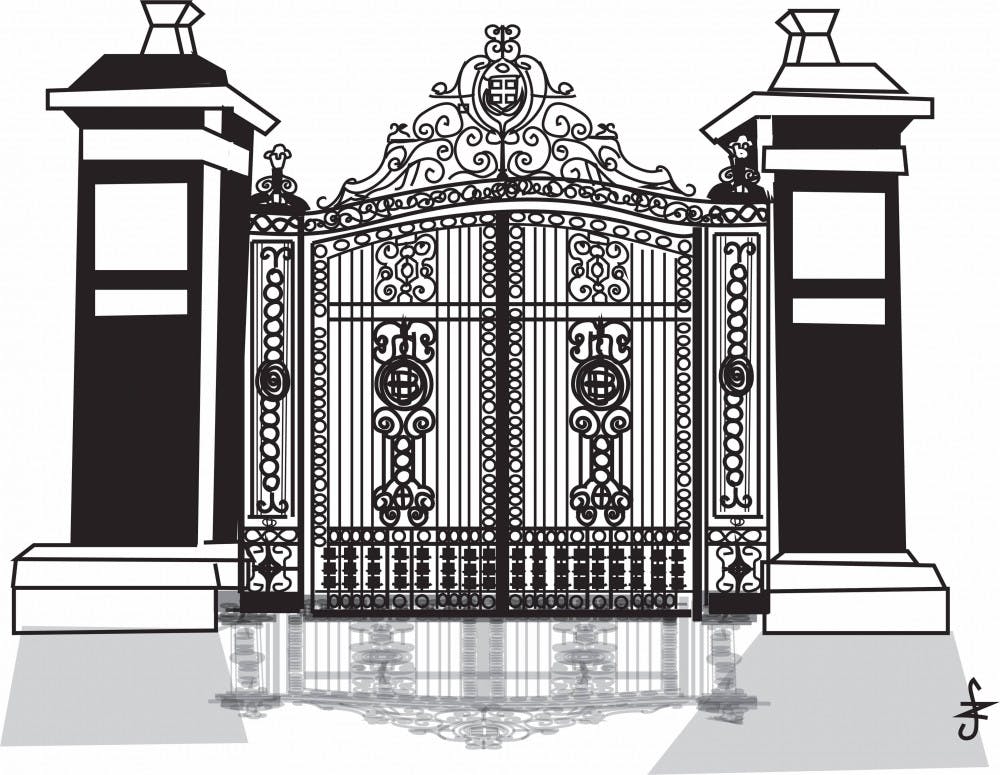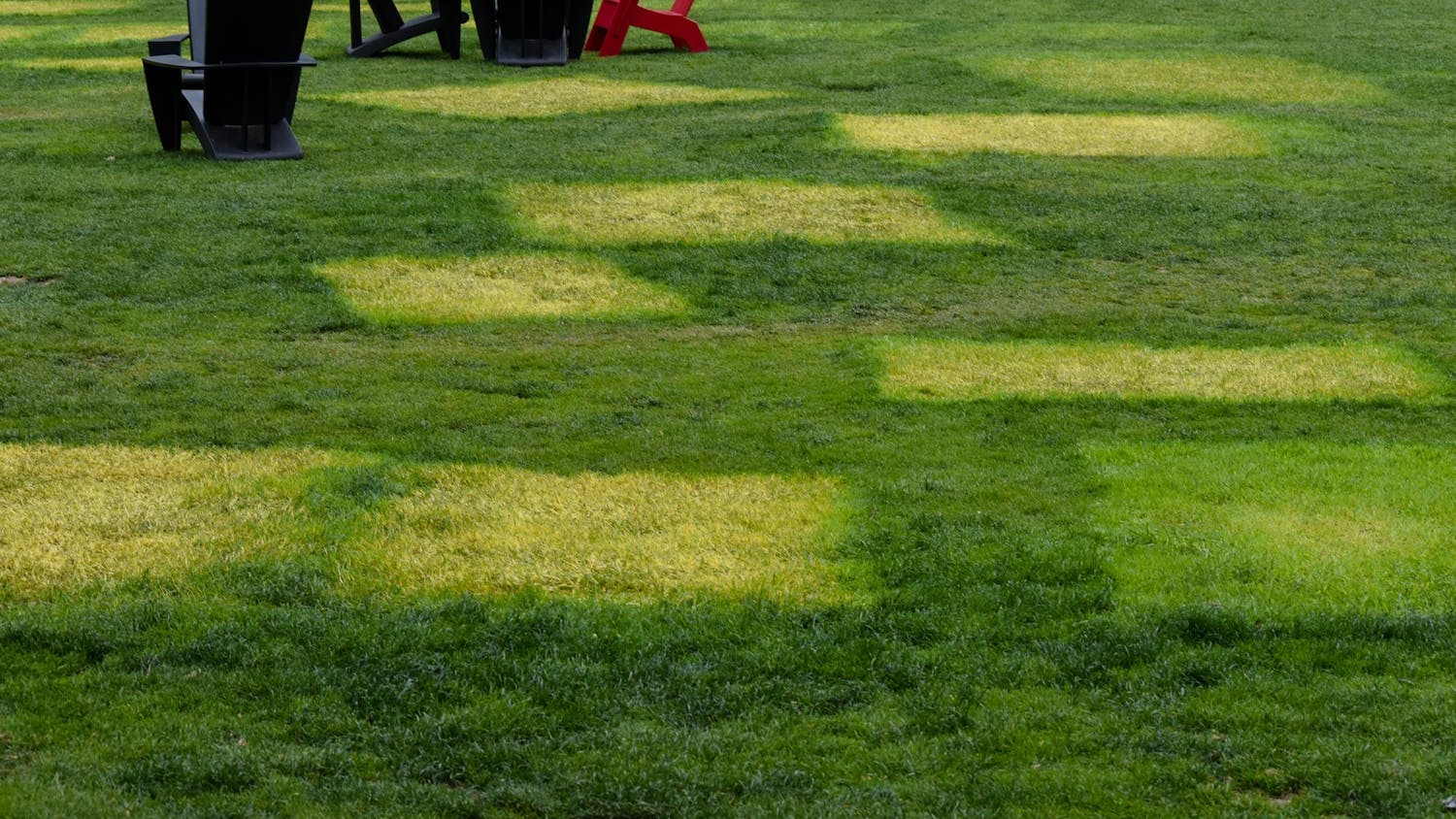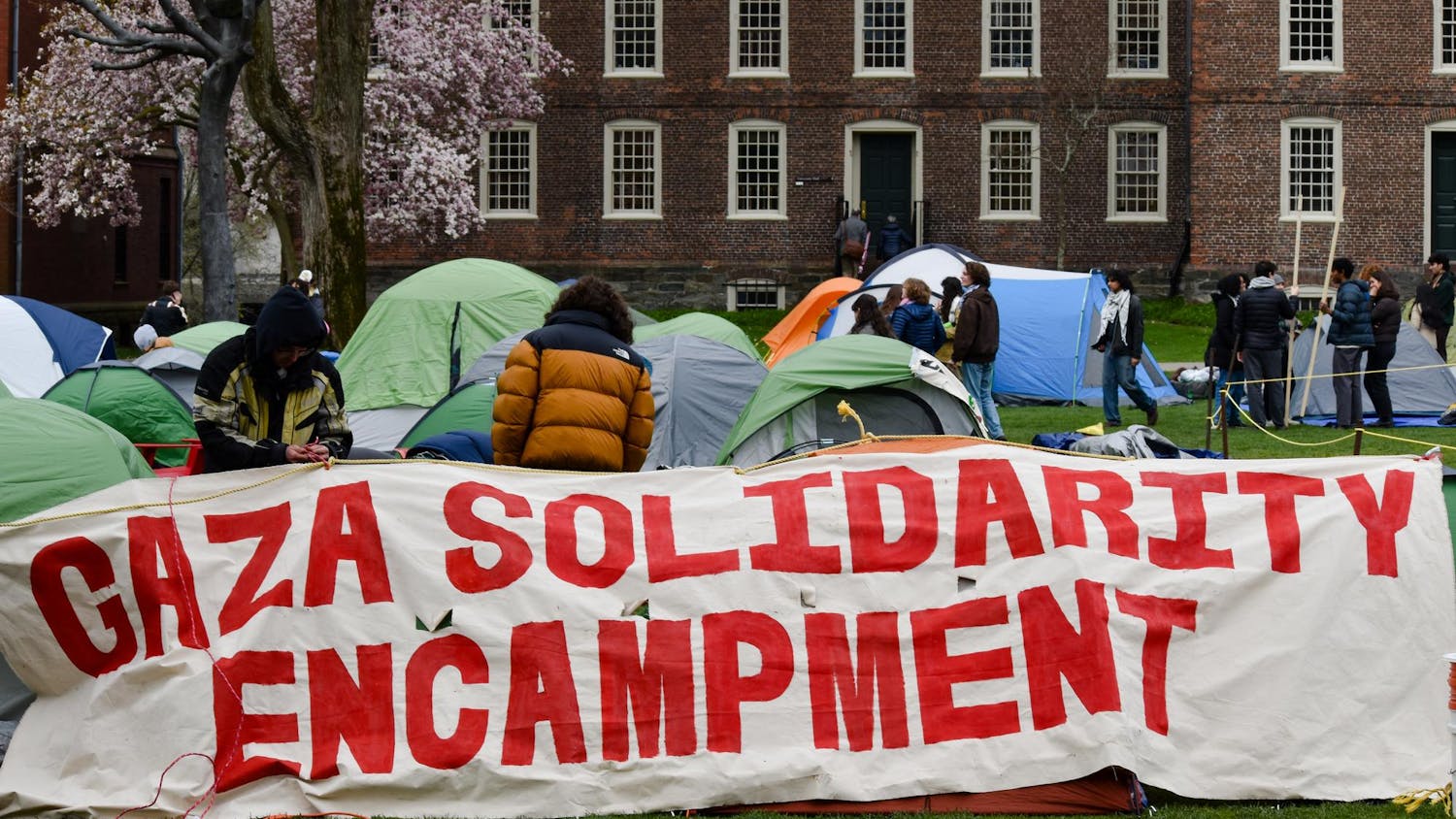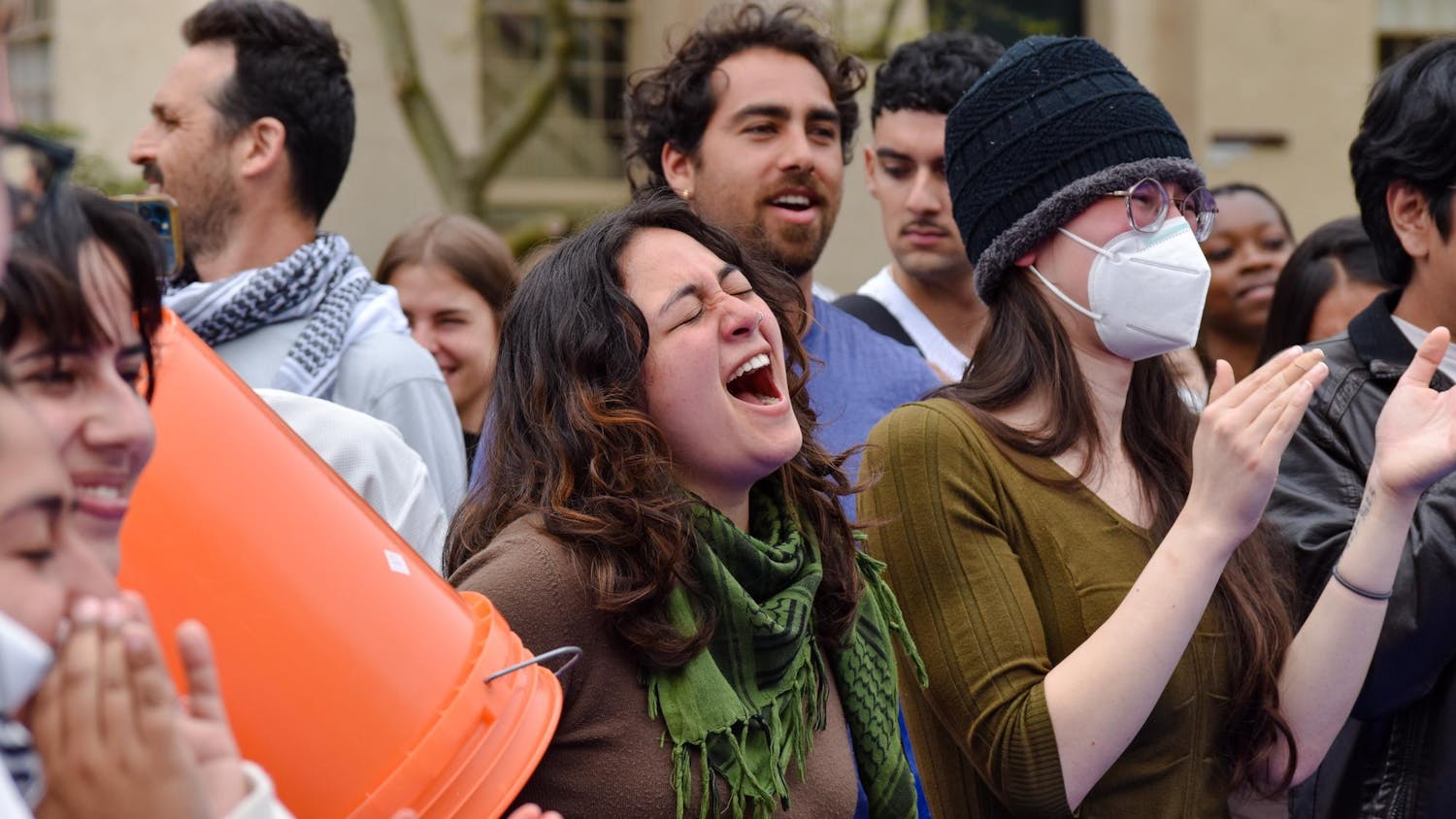This month, campus discussion surrounding ethical investment took center stage following a motion to replace the University’s Advisory Committee on Corporate Responsibility in Investment Policies, the University body that considers “moral responsibility in ... investment policies,” The Herald previously reported. The committee has been a key mediator in divestment conversations. While faculty voted to postpone the final decision, the proposal sparked discussion on campus about student participation in ethical investment initiatives.
As an advisory committee comprising students, staff, faculty and alums, ACCRIP has called for increased sustainability in University investments. In 2013, the committee recommended that the University divest from 15 coal companies following activism from students in Brown Divest Coal. But the committee’s recommendations do not guarantee a change in institutional policy; the Corporation eventually decided not to divest from coal.
In a community-wide email at the time, President Christina Paxson P’19 urged Brown students to effect change in other ways beyond divestment, adding that Brown is in the position to “make real and important contributions through teaching and research.”
In 2015, the administration considered the subject of ethical investment through a different lens: donor agency. Paxson directed the Investment Office to investigate options for students and alums who wished to donate in ways that expressed their commitment to sustainability, according to a University press release.
After a year working as an Investment Office intern, Sophie Purdom ’16 designed and co-taught an undergraduate course on sustainable investment in her senior year. The class was instrumental in the 2016 launch of the Brown University Sustainable Investment Fund, an endowed fund that follows environmental, social and governance investment standards and accepts gifts of all sizes. While the fund was promoted by the University as the first of its kind at the time of its launch, BUSIF has since amassed only $12,631 from over 30 donors in the past three years, according to the Investment Office and the Division of Advancement.
Acronyms unpacked: ESG and BUSIF
While divestment is a form of “negative screening,” environmental, social and governance standards serve as guiding principles for fund managers in the selection of companies to invest in, said Adjunct Lecturer Cary Krosinsky. Social concerns might include investigating supply chains, for instance, while governance deals with the management of the company in question and the workplace environment that it fosters.
Purdom finished the environmental studies concentration early in her time at Brown and realized that while she had discussed a lot of problems in her courses, she still desired more “tools and frameworks for solutions.” She built her “investing tool kit” by joining the Brown Socially Responsible Investment Fund, a student investment group, and found inspiration in friends who were pursuing careers in finance, banking and consulting. “I came to respect that they had a framework and tools that I hadn’t learned,” Purdom said.
While serving as president of SRIF, Purdom began an internship in the University’s Investment Office. After conversing with Chief Investment Officer Jane Dietze and others, Purdom focused on “incorporating climate into (Brown’s) endowment investment practices” by discussing ESG checklists with external fund managers.
Communicating the impact of this work to the larger University community came with its own challenges. It can be hard to “get the blood moving when it comes to sharing what Brown’s doing as a leader in ESG,” Purdom said. In order for students and others to understand both the power and potential of sustainable investing, there would have to be an outward-facing aspect to their work.
After Dietze and Purdom discussed their idea with administrators and Paxson, among others, they decided that a sustainability-focused fund would be the best avenue, Dietze said. While the University works with multiple fund managers who might adopt ESG principles, “we decided that Brown was in a position to basically be the first major University endowment to set up a specially cordoned-off part of the endowment to explicitly invest along ESG guidelines,” Purdom said. BUSIF is also remarkable in that — unlike other endowed funds — it does not require minimum donations of $100,000, a move that aimed to attract younger alums, according to a community-wide email from Paxson.
The fund’s payouts would be used at the University administration’s discretion, with an emphasis on sustainability projects, according to a University press release.
“Theory and Practice of Sustainable Investment”
The creation of BUSIF was only a part of the community outreach Purdom hoped to achieve. “I wanted to … have people share in what I thought was a real win for everybody,” she said.
In the fall of her senior year, she wrote the curriculum for a class on sustainable investment — what would become ENVS 1545: “The Theory and Practice of Sustainable Investment.”
“I just went for it and wrote the curriculum for it because no one told me not to, which is one thing I really love about Brown,” Purdom said. To her surprise, the course was approved by the University on the first day of her final shopping period in the spring, tasking Purdom with building student interest and finding an adjunct lecturer to join her in teaching the class.
Dietze and Purdom found their match in the “hugely prolific” Krosinsky, Purdom said, describing him as “an excellent mentor” who “loves the students” in his class. Krosinsky’s teaching style “fits in really well at Brown in particular, where … it’s up to you to have self-agency and make the most out of stuff.” Purdom describes this mindset as “perfect in a complicated space like sustainable investing.”
But Krosinksy and Purdom were unsure if they would be able to attract students to the course. Students had already registered for classes and shopping period was underway. To Purdom, gaining the rapid approval of the course and Krosinsky’s commitment to teaching would seem like a “lost opportunity” if it did not receive student interest.
That is, until the first day of the course arrived and interested students poured into their classroom — a few waiting before Purdom and Krosinsky arrived themselves. “We kept moving down the hallways to these bigger and bigger rooms, and eventually ended up in an auditorium,” Purdom said. “That was when we realized we were on to something.”
The class’s first semester paralleled the creation of BUSIF. For the course’s final project, students recommended two appropriate ESG funds for BUSIF. The Investment Office presented their own findings concurrently, Dietze said. Both chose the Parnassus Endeavor Fund.
“It was this big reveal, where we were all really aligned,” Purdom said. “It was really beautiful because that was kind of why we started the class in the first place, … to build this mutual understanding.”
In an executive summary from the Investment Office, the Office reported that they selected the Endeavor Fund after analyzing performance, portfolio attributes and the fund’s ability to meet ESG standards, among other criteria.
“We use ESG as a lens to basically uncover risks and opportunities that the rest of the market is not as focused on,” said Robert Klaber ’07, a portfolio manager for one of Parnassus’ equity funds, the Parnassus Fund. Money donated to BUSIF goes to the Endeavor Fund, which specifically targets companies with model workplaces under the “basic thesis that these companies will be able to attract and retain top talent, which will lead to less turnover, which leads to better profitability and ultimately better shareholder returns,” Klaber said.
In addition to being fossil fuel-free, “the whole purpose of the particular fund that was chosen is to isolate companies that are good for working mothers and good companies to work for in general,” Krosinsky said.
The Parnassus Endeavor Fund has performed very well over the last four years, Purdom said. “It has done really well for itself and for all of the people who chose to invest in the BUSIF platform,” Purdom said. “We picked the leader. It doesn’t get better than that.”
Making the pitch
Despite continued conversations on campus about ethical investment and climate change, “we’ve got to do a better job as a university of figuring out how to pitch” BUSIF, Purdom said.
In 2017, ACCRIP recommended that the University better publicize the fund. One year into the creation of BUSIF, $6,600 had been invested in the fund, The Herald previously reported. In a community-wide email, Paxson responded to ACCRIP outlining measures to publicize the fund, including “making BUSIF more visible on the ‘Giving’ pages of the Brunonia website, featuring content on BUSIF in existing vehicles such as Advancement’s Campaign Impact eNews and integrating the BUSIF message into appropriate communication directed to young alumni.”
“As Advancement continues to evolve its marketing analytics capabilities, it might also be possible to better identify alumni, parents and friends with an interest in environmental and sustainability issues, who may be interested in targeted BUSIF giving opportunities,” Paxson wrote.
When Advancement officers “feel like somebody may have an affinity or an interest to a particular area, they will talk to them about it,” said Senior Vice President for Advancement Sergio Gonzalez. “Sustainability is something that certainly resonates, I believe, with Brown alums. It resonates with our broader community, so I think that there are a lot of opportunities in the future.”
“ESG definitely isn’t a dinner-table conversation yet,” Purdom said, emphasizing the need for Advancement officers to make their pitch for BUSIF “something that is really easy to understand and that (donors) feel emotionally connected to.”
“There used to be a notion that ESG (would) detract from investment performance, and I think what we’ve done a good job of at Parnassus is demonstrate that, no, actually, ESG helps enhance and boost performance,” Klaber said. “You can invest with your principles and generate top-tier performance as well.”
“As we move forward, one of the things we’re thinking about is how to energize more interest in this fund and other things that we’ll be doing around sustainability,” Gonzalez said.
For the fund to gain traction, Dietze and Krosinsky both believe action needs to come from students or alums. “When Brown students take charge — that’s usually the best things that happen at Brown,” Krosinsky said.





